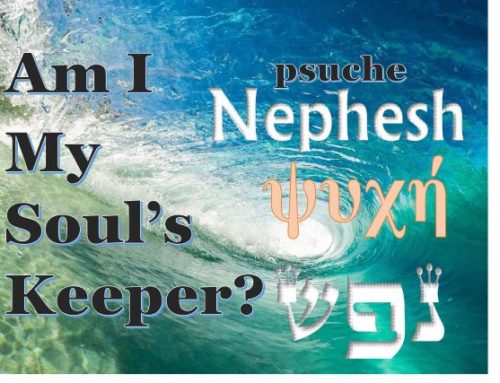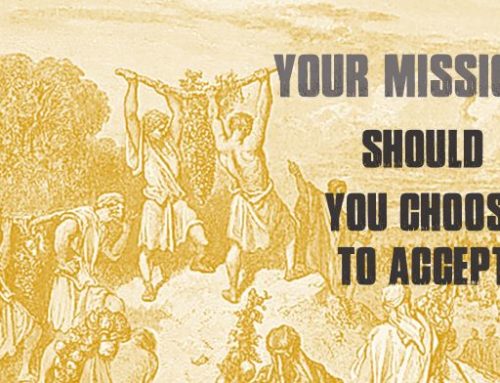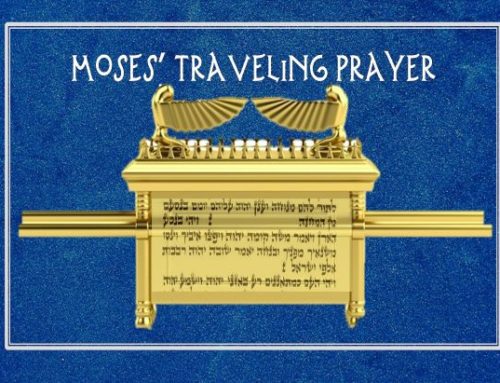Parashat Ekev, Deuteronomy 7.12-11.25, Isaiah 49: 14-51:3
“Therefore you are to set these words of Mine in your heart and in your soul. You are to bind them as a sign on your hand, and as frontlets between your eyes. You are to teach them to your children, speaking of them when you sit in your house, when you walk by the way, when you lie down and when you rise up. You are to write them on the doorposts of your house and on your gates.” Deuteronomy 12. 18-20 TLV
In 1943, acclaimed Jewish artist Marc Chagall painted Jesus on the cross amidst a background of modern Jewish suffering. Retaining the traditional halo over the head, Chagall added the tefillin, the prayer boxes spoken of in our Torah Portion, sometimes called phylacteries, containing Scripture placed on the head and arm. Similarly, Other Chagall paintings show Jesus’ waist covered modestly with a tallit, prayer cloth. At the height of the Holocaust, Chagall seemed compelled to paint Jesus suffering alongside of Israel.
Some seven times in Parashat Ekev, Moses admonished us to keep God’s commands with at least seven Hebrew verbs: listen, keep, observe, fear, remember, love, and impress. Impress means literally “to place”. Place them on the frontlets of our eyes, on our hand, and at the entrance to our houses. Did Yeshua wear tefillin? Did His followers? We must assume that they did. Had He not worn the fringes, tzitzit, on his four cornered garments, Num. 15.38, or the tefillin, Deut. 12.18, it would have been noted by the same ones who critiqued His healing on the Sabbath. Archaeological finds from the Dead Sea demonstrate the importance of tefillin in Yeshua’s day. So, what did Yeshua mean when He said,
“All their works they do to be noticed by men. They make their tefillin wide and their tzitziyot long.” Mat. 23. 5 TLV
Yeshua addressed the motivation in wearing tefillin and tzitzit. Similarly, Messiah criticized praying to be seen but affirmed prayer. This goes to an important Jewish teaching or concept called kavanah. Kavanah is the motivation or intention with which one approaches worship, wearing tefillin, and the prayer shawl or tallit. Yeshua’s teaching is at the heart of Jewish understanding and motivation in worship. Let us look briefly at the three ways this command can be applied spiritually to all believers.
I. Bind them as a sign on your hand
Our tradition is to wrap the leather strap attached to the tefillin around the weaker arm seven times between the elbow and the wrist. This is done on the weaker hand as a type of strengthening to do the will of God. Our hands are extensions of God’s mercy. Yeshua touched the leper and healed him. The Synagogue ruler implored Yeshua, “My daughter has just died, but come lay Your hand on her and she will live.” Mat. 9.18 TLV We place His word on our hand, because our hands are an extension of His love to this world. And not only on our hands, we place His word also between our eyes.
II. And as frontlets between your eyes
Moses called the people of Israel to set these words on the frontlets between the eyes. The physical keeping of this command causes us to be visually aware. Yeshua in the Gospels spoke often about the focus of our eyes. Our eyes form a gateway to our mind. Moses wanted these words to be impressed on our heart and soul, and therefore we must guard what we see and hear, and from there they would overflow to our family. There are no boundaries to loving God through obedience. We are to teach our children when sitting in our home, walking on the path, when lying down, and when rising up. There are to be no boundaries to loving our families with God’s word and commandments. And now we find another admonition for the modern family. Placing God’s word on the gateway of our home.
III. You are to write them on the doorposts of your house and on your gates
Years ago, I travelled to a rural city in Georgia, after being given an address to visit a person I did not know. As I nervously approached the door, something set me at ease. On their doorpost was a mezuza, a small box containing Scriptures described in our Torah Portion. This Christian family had taken this command literally. This was a home which honored Adonai. I am not advocating that Christians place a mezuza on their doorpost, though it is quite appropriate. Nor do we advocate non-Jewish followers of Yeshua wear Tefillin or a prayer shawl. These commandments given to Israel are still vital to the Jewish people and serve as an outward reminder of the need for inward transformation. But all Messiah followers, Jewish or Gentile, must walk in obedience in such a way that His word is the center of our lives. The motivation of our obedience is love.
Conclusion
Many Jewish believers in Yeshua still wear tefillin, and most place the mezuza Scriptures on the doorposts as reminders to love, listen, observe, keep, remember, fear and impress the commandments into their lives and that of their children. There are certain blessings that only come through obedience, especially to the moral commands. I encourage you to read this week’s Torah Portion and write the many blessings of increase and fruitfulness, stability and prosperity found in obedience. Someone might ask, but can’t I have those blessings without obedience? No, blessings flow through right relationship. Moses’ words are echoed by the teachings Messiah, who came to establish God’s laws.
“So now, O Israel, what does Adonai your God require of you, but to fear Adonai your God, to walk in all His ways and love Him, and to serve Adonai your God with all your heart and with all your soul.” Deut. 10.12 TLV
“Then Yeshua said to the Judeans who had trusted Him, “If you abide in My word, then you are truly My disciples.” John 8.31. TLV
“If you love Me, you will keep My commandments” John 14. 15 TLV
May the blessings that flow through loving the Father in obedience rest in your thoughts. May your hands of obedience be His hands extended, and may your home be a sanctuary of the Shalom of His dear Son Yeshua.
Shabbat Shalom




